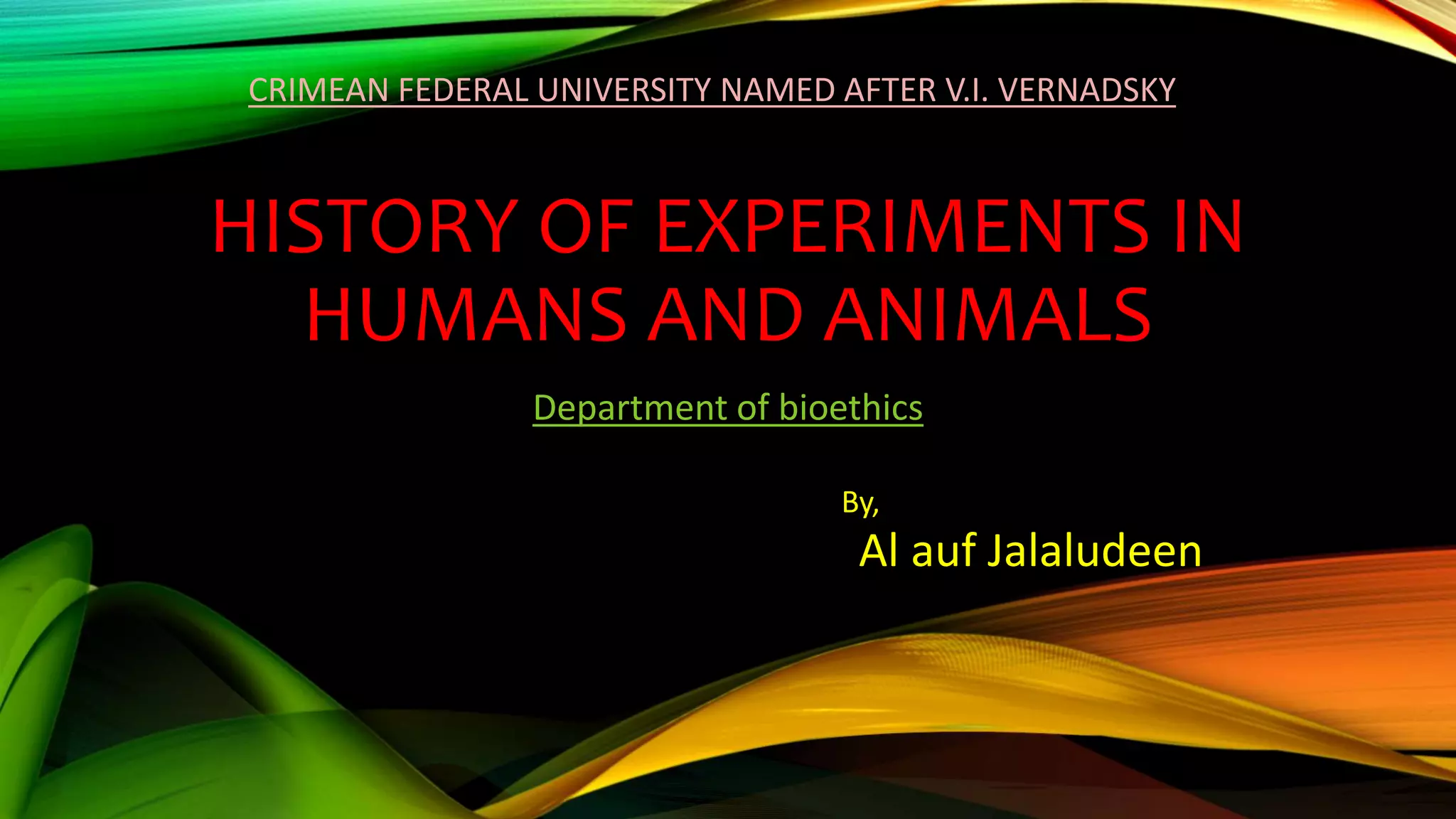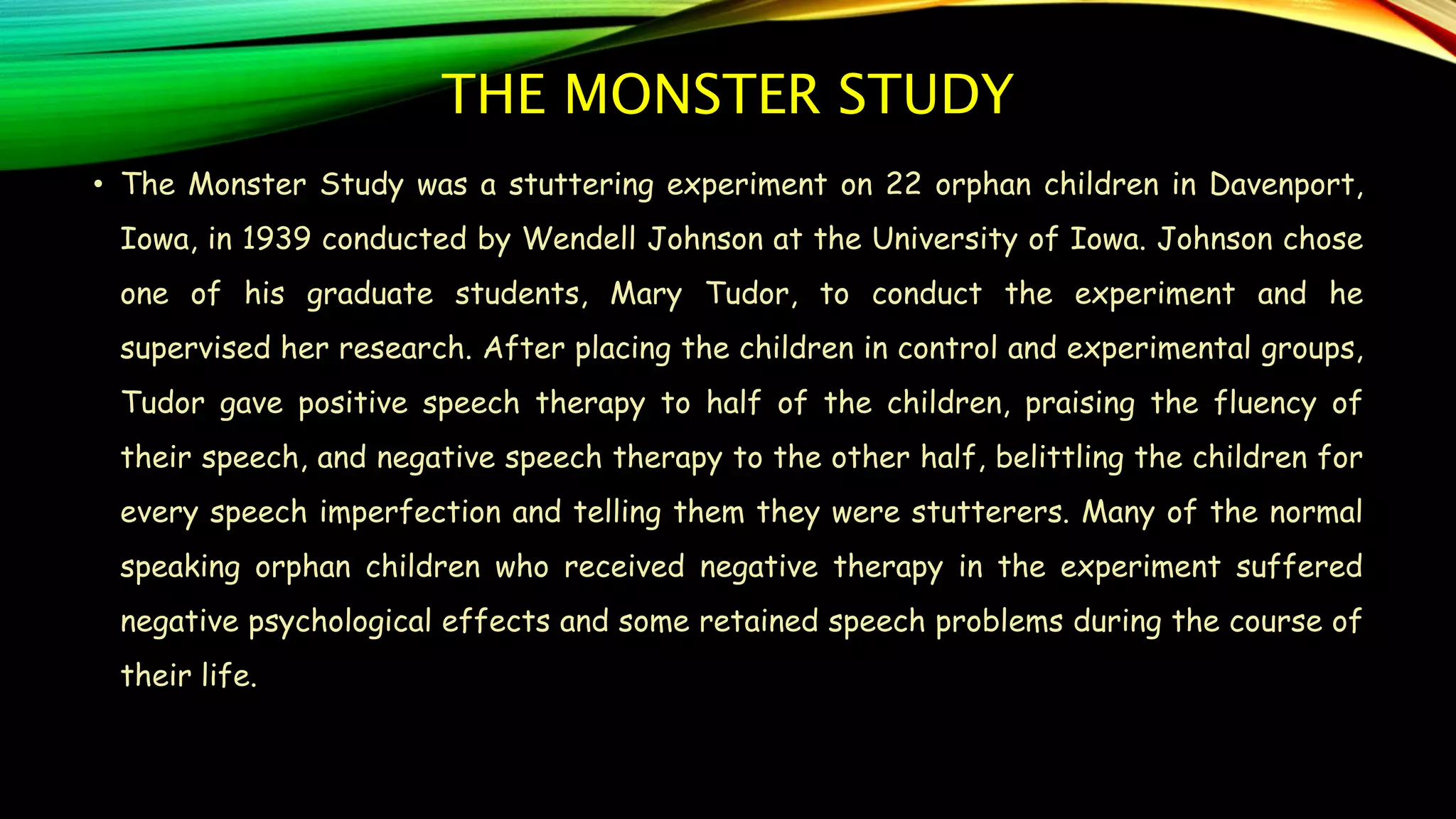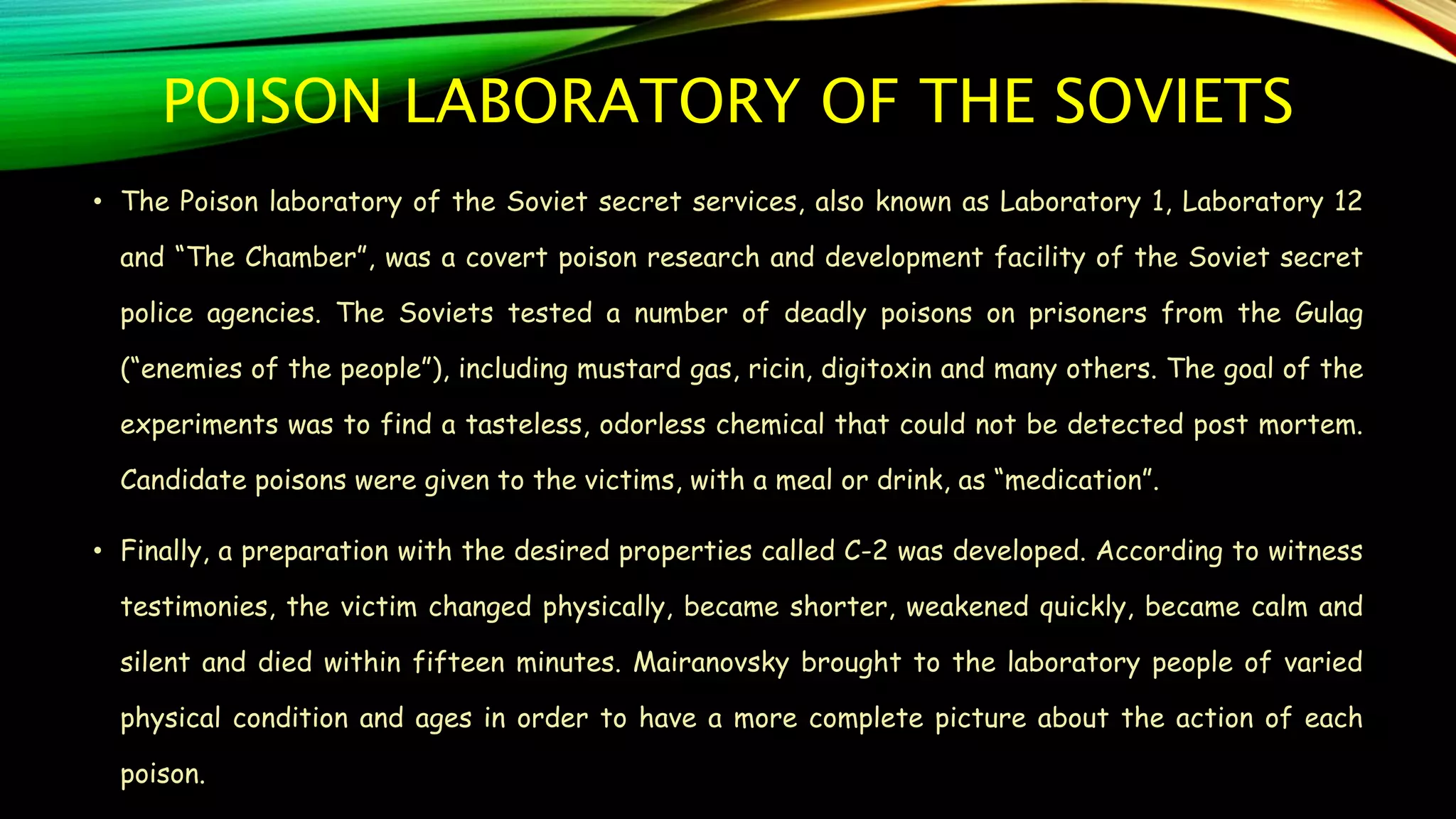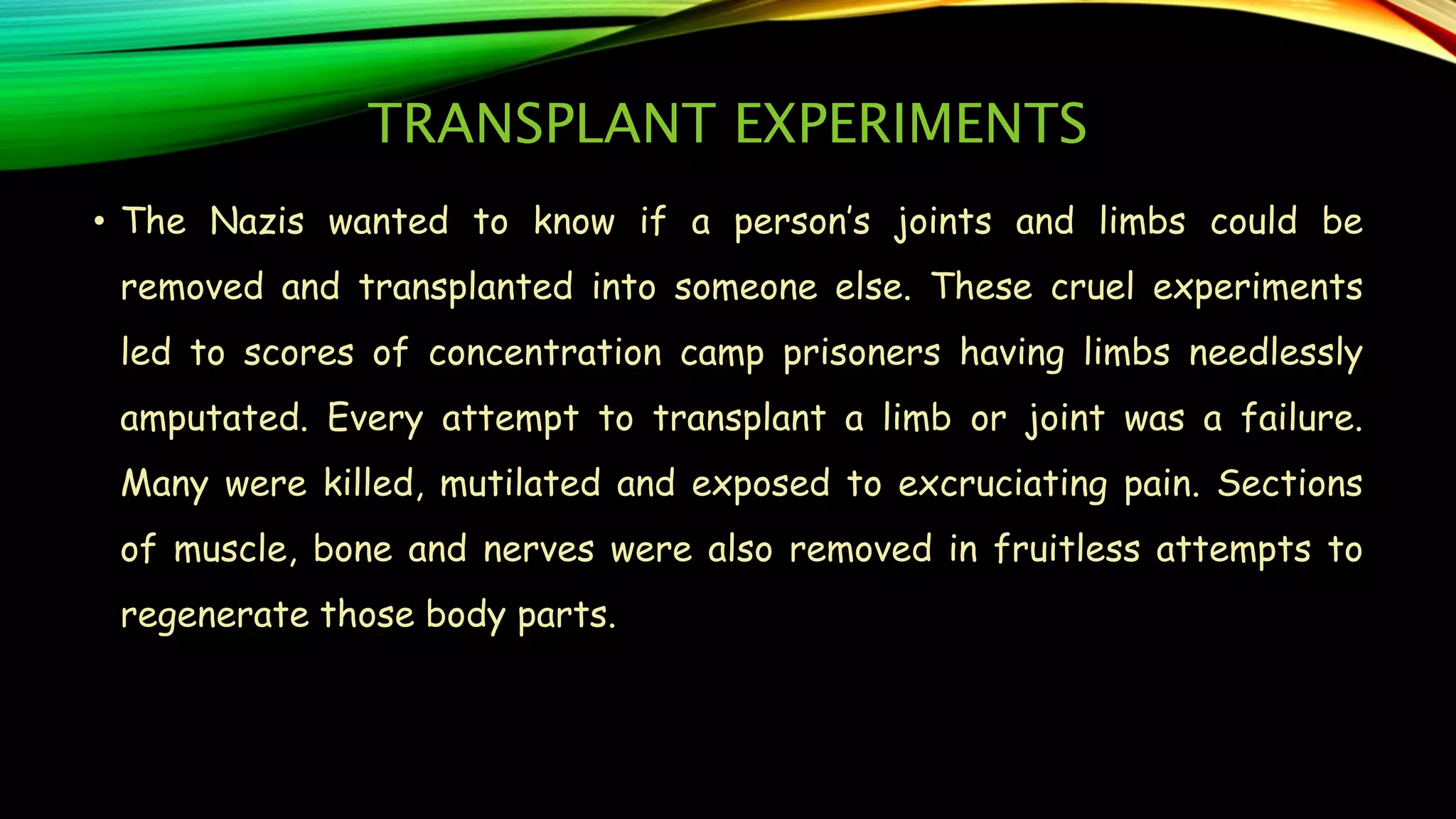This document provides a summary of several unethical human and animal experimentation projects throughout history. It describes experiments conducted by the Nazis, Japanese Unit 731, Soviets, Americans and others. Many involved deliberately infecting or injuring prisoners and concentration camp inmates without consent. The goal of many was to study disease progression, test weapons/toxins, or advance racial ideology. Notable projects included Nazi twin and hypothermia experiments, Japanese plague dispersal tests, US syphilis studies and more. Overall, the document outlines some of the worst violations of medical ethics in history.






















![HEAD INJURY EXPERIMENTS
• In mid-1942 in Baranowicze, occupied Poland, experiments were conducted in a
small building behind the private home occupied by a known Nazi SD Security
Service officer, in which "a young boy of eleven or twelve [was] strapped to a
chair so he could not move. Above him was a mechanized hammer that every
few seconds came down upon his head." The boy was driven insane from
the torture.](https://image.slidesharecdn.com/historyofexperimentsinhumansandanimals-150521185919-lva1-app6891/75/History-of-experiments-in-humans-and-animals-23-2048.jpg)











